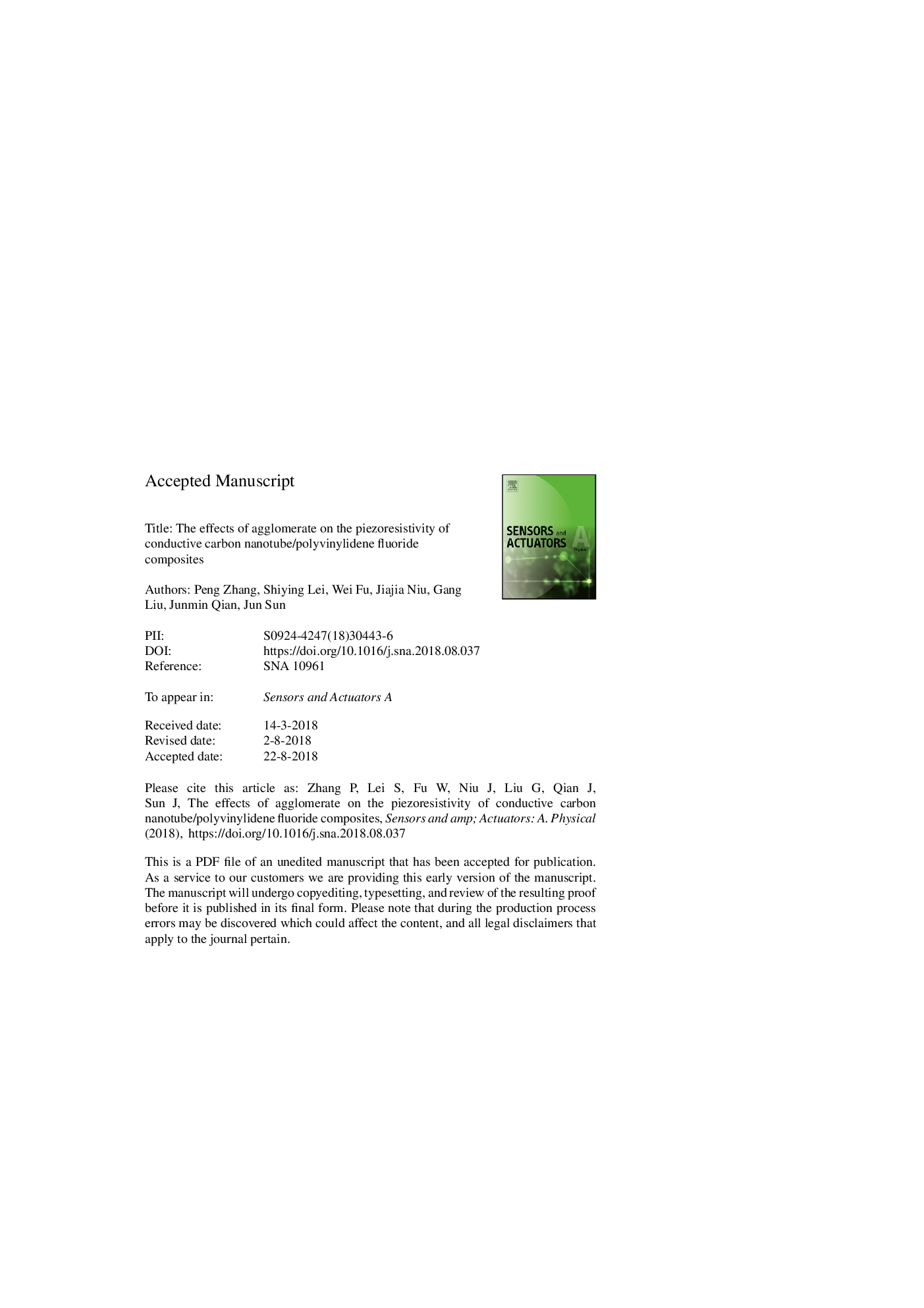| Article ID | Journal | Published Year | Pages | File Type |
|---|---|---|---|---|
| 10133568 | Sensors and Actuators A: Physical | 2018 | 32 Pages |
Abstract
Conductive polymer composites are prepared with a polyvinylidene fluoride (PVDF) matrix and multiwalled carbon nanotube (MWCNT) as filler. The mechanical properties, electrical conductivity and piezoresistivity of the composites are investigated as a function of MWCNT volume fraction. An optimal combination of ductility and piezoresistivity is found in the composite slightly above the electrical percolation threshold, showing a maximum fracture strain â¼ 4 times higher than the pure PVDF samples, as well as an outstanding sensitivity of piezoresistive response. Increasing further the MWCNT volume fraction leads to deterioration of both ductility and piezoresistivity. The effects of MWCNT content on piezoresistivity and fracture strain can be understood based on the microstructure observations. In particular, by incorporating two characteristic microstructural features identified in the materials, i.e., the filler random distribution and the filler agglomerate, into a simple statistical network model, the experimental measurements of piezoresistivity can be successfully fitted and understood in a semi-quantitative manner.
Related Topics
Physical Sciences and Engineering
Chemistry
Electrochemistry
Authors
Peng Zhang, Shiying Lei, Wei Fu, Jiajia Niu, Gang Liu, Junmin Qian, Jun Sun,
